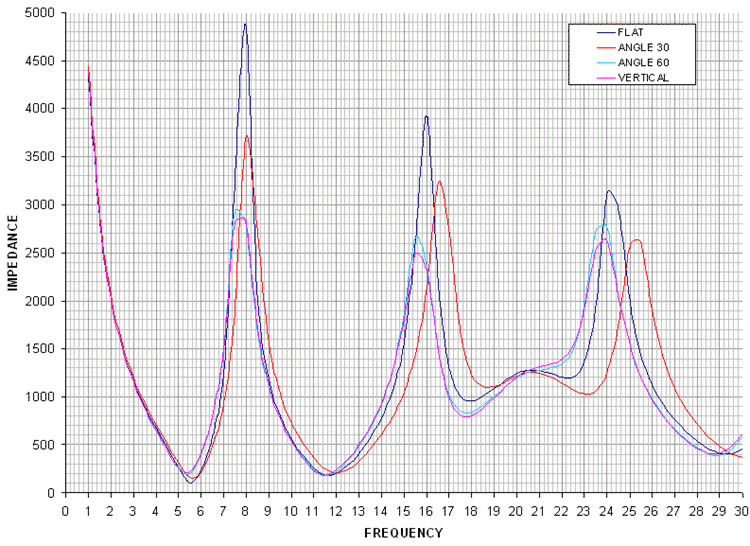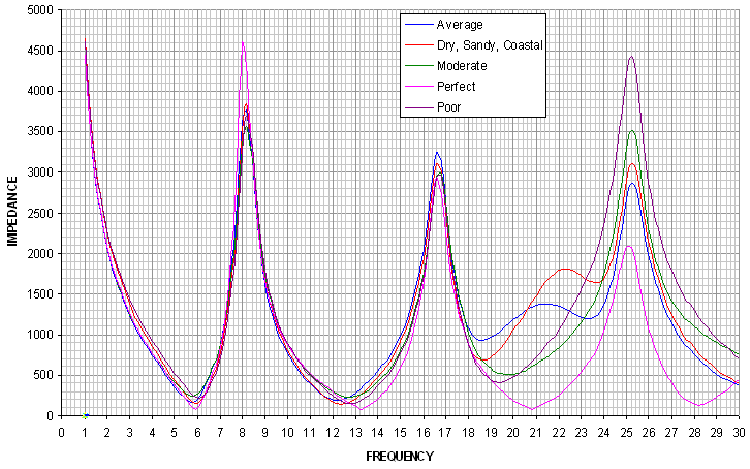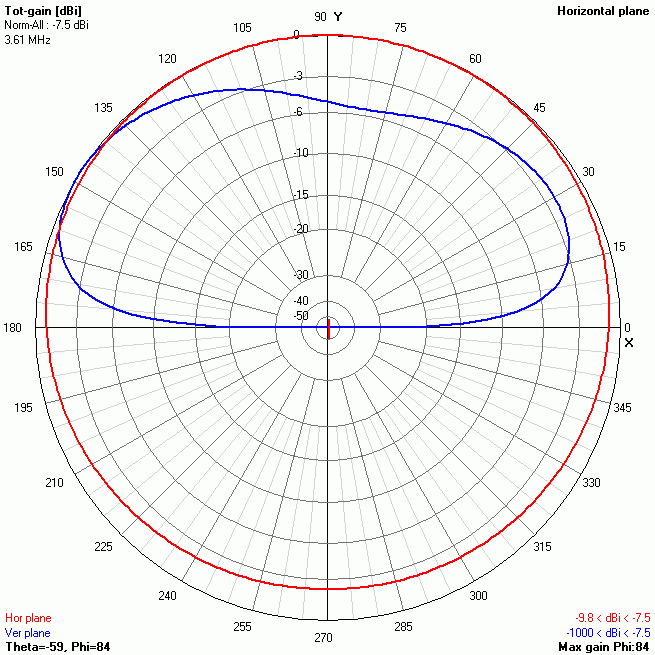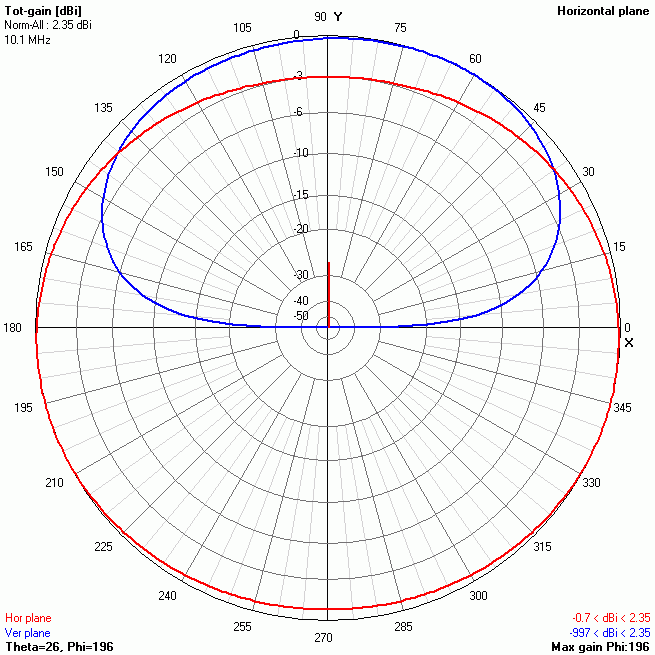|
LONG WIRE ANTENNA
Long
wire antenna for portable operations.
With the view to establish a quick and easy
multi-band antenna for portable and camping operations a
simple long wire antenna with an earth or earth plus counterpoise
arrangement with a 9:1
voltage unun including a tuner or simply with a tuner is one possible solution. With the
9:1 voltage unun and wire lengths suggested in the below tables the
antenna should present non extreme impedances for all HF amateur
band frequencies. This page is far from complete and
represents the ongoing investigation into this type of antenna.
Experiments to date seem to have raised more questions than obvious
answers.
Description
The ARRL Antenna Book describes the general characteristics of Long Wire
Antennas. Whether the long wire antenna is a single wire running in
one direction or is formed into a 'v'. rhombic or some other
configuration. there are certain general principles that apply and
some performance features that are common to all types. The first of
these is that the power gain of a long wire antenna as compared to a
half wave dipole is not considerable until the antenna is really
long (its length measured in wavelengths rather than metres of
feet).
While the below described antenna does not fit the criteria for a true
long wire antenna on the lower bands it will on the higher band
above 20m and certainly meets the definition at 10m. Technically
a true "longwire" needs to be at least one wavelength long. but Hams commonly call any end-fed wire a longwire or more correctly
random
wire antenna.

Figure
1 Typical
ATU and long wire antenna configuration with an
earth or earth plus counterpoise.

Figure 2 Typical
9:1 voltage
unun and long wire antenna configuration with an
earth or earth plus counterpoise.
The
feed impedance of the end fed long wire antenna is perhaps the main
consideration particularly as in this case the antenna is to be a
multi-band antenna, being a useful radiator on all amateur radio
bands from 80m through to 6m. If the antenna were to be a single
band antenna with the wire cut to a ¼ wave length at the desire
frequency this would produce a feed impedance somewhere between
about 30 ohms to 80 ohms and would therefore be relatively easy to
achieve a useful match. A multi-band end fed wire antenna presents a
potential problem in that a ¼ wave length antenna cut for say the
80 metre band will present a feed impedance of about 70 ohms however
when the same antenna is used on the 40 metre band the feed point
impendence will be several thousand ohms and therefore difficult to
achieve a match even with a quality tuner. The trick is to making this type
antenna an easier match by avoiding the lengths that are 1/2
wavelength and harmonically related to 1/2 wavelengths or simply multiples of
1/2 wavelengths that will present the most extreme rang of impedances.
Figure 3 is a table of lengths to be avoided in relation to spot
frequencies within all amateur HF bands and including the 160m band
and 6m band, the lengths are 2% shorter due to the real world effect of the wire
diameter. The values in
Figure 3 have been determined with the following simple formula
to determine the 1/2 wave length of wire for a given frequencies of interest
and multiplied across the table to determine the harmonic related
lengths.

The
Figure 4 scatter graph presents
the data from the
Figure 3 table showing blue dots for the lengths of wire to be avoided in
vertical as related to frequency in the horizontal. For example a
wire length of 45m metres projected across the scatter graph does
not intersect with a blue point and is in fact well clear of any
dots making it an ideal wire length.
|
Frequency
MHz
|
1/2
Wave Length
|
1
Wave Length
|
1
1/2 Wave Length
|
2
Wave Length
|
2
1/2 Wave Length
|
3
Wave Length
|
3
1/2 Wave Length
|
4
Wave Length
|
|
1.84
|
79.9
|
159.8
|
239.7
|
319.6
|
399.5
|
479.3
|
559.2
|
639.1
|
|
3.6
|
40.8
|
81.7
|
122.5
|
163.3
|
204.2
|
245.0
|
285.8
|
326.7
|
|
7.1
|
20.7
|
41.4
|
62.1
|
82.8
|
103.5
|
124.2
|
144.9
|
165.6
|
|
10.1
|
14.6
|
29.1
|
43.7
|
58.2
|
72.8
|
87.3
|
101.9
|
116.4
|
|
14.15
|
10.4
|
20.8
|
31.2
|
41.6
|
51.9
|
62.3
|
72.7
|
83.1
|
|
18.1
|
8.1
|
16.2
|
24.4
|
32.5
|
40.6
|
48.7
|
56.9
|
65.0
|
|
21.2
|
6.9
|
13.9
|
20.8
|
27.7
|
34.7
|
41.6
|
48.5
|
55.5
|
|
24.9
|
5.9
|
11.8
|
17.7
|
23.6
|
29.5
|
35.4
|
41.3
|
47.2
|
|
28.5
|
5.2
|
10.3
|
15.5
|
20.6
|
25.8
|
30.9
|
36.1
|
41.3
|
|
52
|
2.8
|
5.7
|
8.5
|
11.3
|
14.1
|
17.0
|
19.8
|
22.6
|
Figure 3
Table of wire lengths 'L' in metres to be avoided based on
multiples of 1/2 wave lengths of popular amateur radio frequencies.

Figure 4
Scatter graph of wire lengths 'L' in metres to be avoided based on
multiples of 1/2 wave lengths of popular amateur radio frequencies.
Based
on conclusions from Figure 3 & 4 tables a length of 12.87m
chosen
The
graph in Figure 5 has
been produced with data generated from 4NEC2 antenna modelling
software for a wire length of 18.7 mtr. The modell was to determine
installation effects on the impendence distributed over a
frequency range from 1 MHz through to 30 MHz. The modelling assumes
good ground conductivity and all antenna configurations have a
modest 4.0 mtr counterpoise, remembering that the objective of this
exercise is to evaluate a simple easily deployable portable
multiband antenna.
The
details of the three antenna configuration modelled with 4NEC2 are
as follows;
·
An
antenna wire of 18.7 mtr in total length with 15.7 mtr installed
horizontally at 2.5 mtr above the ground and with a 3 mtr 30 degrees
angled lead in section to the RF source or the graphed impedance
load point.
·
An
antenna wire of 18.7 mtr in total length installed at an angle of 30
degrees from the RF source or the graphed impedance load point.
·
An
antenna wire of 18.7 mtr in total length installed at an angle of 60
degrees from the RF source or the graphed impedance load point.
·
An
antenna wire of 18.7 mtr in total length installed vertically from
the RF source or the graphed impedance load point.
While these four configuration are the extremes for this type of antenna installation
it is interesting and surprising to note that while there is some
effect on the location of the high and low impedance nodes in
relation to the frequency it is not as dramatic as I would have
imaged. Also worth noting that the range of impedances ranging from
near 5k ohms to less than 100 ohms should be within the range of any
reasonable antenna tuner however the data samples for the graph were
generated in 0.5 MHz intervals and smoothed with the result that the
peaks at 8 and 16 MHz and trough at 5.5 MHz may be more extreme than
the graph suggests.

Figure
5
Produced with data generated
from 4NEC2 antenna modelling software. Four variation of a random
wire antenna with a length of 18.7 mtr.
The
graph in Figure 7
has
been produced with data generated from 4NEC2 antenna modelling
software for an antenna wire of 18.7mtr total length installed at
an angle of 30 degrees over a selection of ground types. Despite
ground types all graphed impedances peaks and troughs are at roughly
the same
frequencies with the only clearly noticeable shift being over perfect ground which is
obviously not likely to be encounter. These ground types represent
the extremes with most if not all real world types falling within
the ranges presented.
4NEC2
antenna modelling software ground definitions.
|
Average
|
Conductivity
= 0.005S, Dielectric Const =
13
|
|
Dry,
Sandy
, Coastal
|
Conductivity
= 0.001S, Dielectric Const =
10
|
|
Moderate
|
Conductivity
= 0.003S, Dielectric Const =
4
|
|
Perfect
|
Perfect
|
|
Poor
|
Conductivity
= 0.001S, Dielectric Const =
5
|

Figure
6
Produced
with data generated from 4NEC2 antenna modelling software for an
antenna wire of 18.7 mtr total length installed at an angle of 30
degrees over a selection of ground types.
All very interesting until the assumptions and
modelling were developed into a practical antenna following the
parameters established from the modelling. The
results shown in Figure 7 with data generated
from an AIM 4170C antenna analyser
were very interesting as the results varied dramatically from the
model in every respect, while the values of the impedance peaks and troughs
were expected to vary its was completely unexpected that the peaks and troughs
were so far out of alignment in terms of frequency. The first trough at approximately
5.9MHz appeared at 4.0MHz and at about 25% of the value in the real antenna. The first high impedance peak within the HF band was around 8.1MHz
in the model and 6.6MHz in the real antenna.
Attempting a bit of relatively
blind experimenting, a 4.3m length was added to the wire antenna
bring it to a new total length of 23m.
The
results shown in Figure 8 with data generated
from an AIM 4170C antenna analyser
of
the new 23m radiator are an improvement of sorts, however the feed
impedance over the 1.0 - 30MHz spectrum have changed to the point of
being unrecognisable with respect to the slightly shorter 18.7m
radiator.
Figure
9 shows the
continuing unpredictable nature of this antenna with the addition of
the 1:9 voltage unun at the feed point producing a graph of the
impedance that seem to have little in common with the antenna
without the unun.

Figure
7
Measured
impedance from 0.5MHz to 30MHz of the 18.7mtr total length
end fed wire antenna. Graph generated with data from from an
AIM 4170C antenna analyser. The
three parallel red lines indicate the range that it was hoped that
most amateur bands would fall into.

Figure
8
Measured
impedance from 0.5MHz to 30MHz of the 23.0mtr total length
end fed wire antenna. Graph generated with data from
from an AIM 4170C antenna analyser. The
three parallel red lines indicate the range that it was hoped that
most amateur bands would fall into.

Figure
9
Measured
impedance from 0.5MHz to 30MHz of the 23.0mtr total length
end fed wire antenna with a 1:9 voltage unun installed. Graph generated with data from
from an AIM 4170C antenna analyser. The
three parallel red lines indicate the range that it was hoped that
most amateur bands would fall into.

Figure
10 Radiation
plot for the 80m band were produced using NEC based antenna modeller and optimizer
4NEC2.
Due the the short radiator this band dose not produce very efficient
radiation pattern.

Figure
11 Radiation
plot for the 40m band were produced using NEC based antenna modeller and optimizer
4NEC2.

Figure
12 Radiation
plot for the 30m band were produced using NEC based antenna modeller and optimizer
4NEC2.

Figure
13 Radiation
plot for the 20m band were produced using NEC based antenna modeller and optimizer
4NEC2.

Figure
14 Radiation
plot for the 17m band were produced using NEC based antenna modeller and optimizer
4NEC2.

Figure
15 Radiation
plot for the 15m band were produced using NEC based antenna modeller and optimizer
4NEC2.

Figure
16 Radiation
plot for the 12m band were produced using NEC based antenna modeller and optimizer
4NEC2.
Also see 1:9 voltage
unun
References
The
ARRL Antenna Book.
http://en.wikipedia.org/wiki/Random_wire_antenna
http://www.aa5tb.com/efha.html
The
above radiation plots were produced using NEC based antenna modeller
and optimizer 4NEC2by Arie Voors. The Antenna Analyser
software can be found at http://www.qsl.net/4nec2/
TOP
OF PAGE
Page
last revised 12 March 2022
|